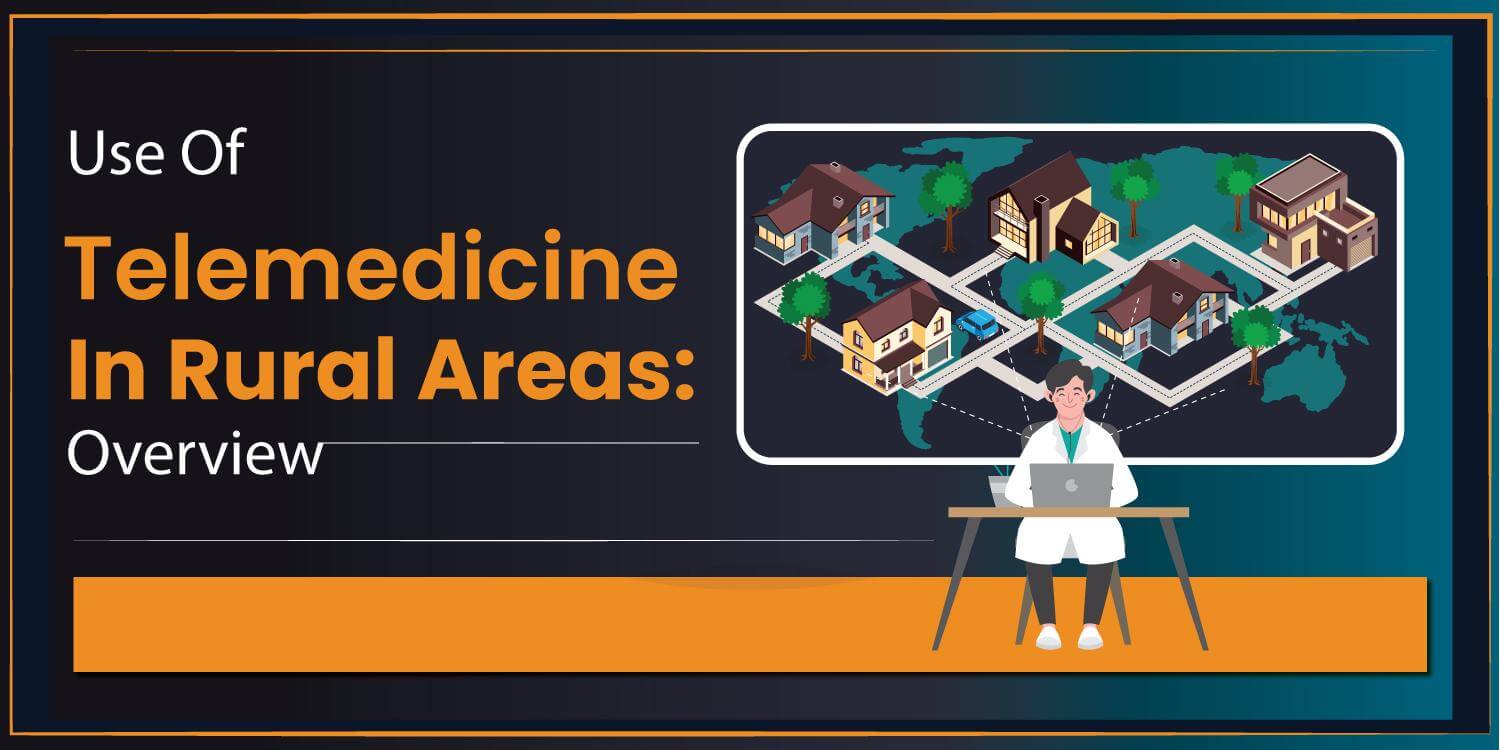Use of Telemedicine in Rural Areas: Overview
The first widely accepted use of telemedicine via video occurred in 1959 in all of Nebraska. The Institute of Psychiatry at the University of Nebraska set up a two-way closed-circuit television system and transmitted the signal to the classrooms to allow students to monitor and facilitate psychiatric examinations.
As in the 60s in many areas of technology, NASA took the next big steps in this area. Telemetry was already in place in many places across the space shuttle; the addition of some systems to monitor the vital signs of an astronaut was an obvious choice.
Development of Remote Video Health
Similarly, the development of remote video health was necessary to monitor the well-being of astronauts in orbit for a long time. The military quickly assimilated this technology and then spread it to the private sector. There, it found particular use in monitoring the health of oil rig workers hundreds of miles offshore.
If we could consult doctors over the phone or via broadband / Wifi or even 3G video conferencing, it would save patients time. It would also allow patients to be consulted in the comfort of their home or wherever it is best to keep themselves private and calm.
And after receiving a diagnosis, the patient can even find the pharmacy closest to the patient and prescribe it so that it is ready when the pharmacy arrives. True, not all prescriptions can be written over the air, but for severe headaches, allergies, or rashes, you can get immediate help. Telemedicine in rural areas has been improving greatly in recent years with the help of next-gen technologies and a great internet penetration rate.
At the same time, doctors can diagnose in a patient format, saving time and money so that they can treat more emerging patients. These consultations last from 5 minutes to 15 minutes at any time.
As technology continues to evolve and web developments improve, the web doctor can significantly improve the large number of patients who are desperately looking for medical and rural health services care but do not have the time to go to the office. It also allows doctors to help those in need more than they normally can.
History of Telemedicine
The idea that doctors can treat patients without being in the same room is not new. Nor does consultation between doctors require physical proximity. From the dawn of the information age to the present day, doctors have counseled patients and each other over the phone. At a more technically sophisticated level, NASA doctors have been electronically monitoring the body functions of astronauts on earlier Apollo missions in the 1960s.
In the early 1970s, as satellite transmission became more available, many telemedicine pioneers began to develop systems that often connected physicians to very distant clinics. One such effort supported Indian health workers in Arizona, and another reached the wildlife of Alaska.
In many cases, these programs did essentially what telemedicine proponents are now trying to do again. They brought specialist counseling and treatment to people who would not otherwise have such help. However, there is an important difference between then and now – this difference is the cost.
These early efforts failed in part because they were hugely expensive to use. In the intervening years, however, a number of events have taken place, which has led to new interest in the region, and the ranking is driven by declining communication costs. In the meantime, significant improvements in the provision of healthcare through electronic communications technology have been vigorously developed, tested, and implemented in two specific areas.
The US Department of Defense has invested heavily in telemedicine technology and will continue to use it for combat and isolated military personnel. In the civilian sector, criminal justice systems began to use telemedicine technology to provide medical counseling and treatment to prisoners in remote prisons, mainly to reduce the rising cost of treatment due to the sharp increase in prisons. Both areas have developed significant improvements in both the technological and medical components of telemedicine, which are now easier to transfer to civilian use.
Benefits of Telemedicine in Rural Health Areas
The benefits of Telemedicine in rural areas have been transforming the field for everyone. The global market definitely suggests some prominent growth in the field in the last few years. Here are some of the benefits of rural Telemedicine services.
Better patient outcome
When the rural population adopts Telehealth technology, it will result in better patient outcomes in terms of treatment and access to rural healthcare.
Social factors
Telemedicine services help to overcome social barriers to outcomes. For instance, it helps providers locate and send medical care to more distant places without public transport. In addition, it will help to improve the economic stability of the region, saving on travel costs and other financial aspects. All these factors contribute significantly to strengthening patient involvement and user satisfaction with the development of the healthcare industry.
Timely maintenance
It provides emergency care as physicians and patients are constantly connected through telemedicine software.
Lack of access
The main goal of telemedicine is to enable the healthcare system to reach remote areas and make them more accessible. There are now few accessible clinics and hospitals in rural telehealth areas. Thus, travel time and distance are the main problems faced by patients that make telehealth in rural areas necessary.
In addition, the waiting time to reach the clinic is too long, as the patient-to-doctor ratio is extremely high. Due to this long waiting time, patients tend to miss both doses and treatments, resulting in poor health. Telemedicine helps to overcome all these barriers by sending medical care through electronic communication between healthcare providers and patients, improving the overall telemedicine in rural areas.
Access to professionals
This gives patients easy access to consult a specialist who is just one tap away. It even saves on transportation costs and time and results in the right treatment at the right time.
Medication compliance
It is important to monitor the vital condition of a patient who is taking medication or has a chronic illness. And it is difficult for the rural population to visit more remote health centers. In such cases, telemedicine acts as a lifesaver and allows providers to monitor the patient’s health from a distance. Sometimes the patient becomes lazy and careless and stops taking medicine as soon as they feel better.
However, with this remotely accessible technology, patients are well reminded and monitored so that they can complete their dosing regimens and improve medication matching and avoid treatment errors.
Comfort
This offers convenience to both doctors and patients, as they have the ability to access each other remotely without being in the clinic.
Enhanced Patient Involvement
When patients show interest in their health goals, it reduces costs and improves health. Patients being involved in the process not only helps the physician but also the patients in scheduling appointments and care. Increased inclusion initiatives can also reduce obesity rates and tobacco use, helping you to encourage patients to lead healthy lifestyles.
Virtual visits for patients by reassuring them that their providers are available and involved in their care. It also makes it simpler for them to contact patients provide early warning and follow-up arrangements to make sure they are being treated right.
Impact of Telemedicine in Rural Areas and Challenges
Telemedicine services are helping various health providers meet the needs of the rural population by providing remote consultation, home monitoring, outsourced diagnostic analysis, remote specialist consultation, and direct-to-consumer telemedicine.
One recent study showed that telemedicine programs are even changing people’s perceptions of their local hospital. They see that an organization with telemedicine capabilities is at the forefront of medical care, not lagging behind. This perception is then filtered throughout the community, increasing engagement.
Although there are challenges in terms of technical training and equipment, one of the main obstacles to expanding telemedicine in rural areas is the lack of broadband monitoring infrastructure for home monitoring. It is crucial to implement technology that does not rely on the universal Internet but that relies on infrastructure that strengthens signals in the outermost regions.
One solution is to simplify federal programs that support broadband expansion. Many experts argue that the industry will not be able to reap the full benefits of telemedicine in rural areas until connectivity issues are resolved. Addressing these issues would lead to better maintenance and lower costs.
Conclusion
Telemedicine in rural areas has significantly changed the lives of patients in the countryside. With the evolution of technologies, the field of telemedicine has introduced a lot of innovations that are helping physicians in delivering extreme care and extend their reach. If you need help with any kind of telemedicine software solution, VCDoctor has a list of perfect solutions for you that have helped various professionals in the field. Get in touch with our experts for more information.




